Is Subsistence farming inefficient and a cause of poverty in the rural areas of the South?
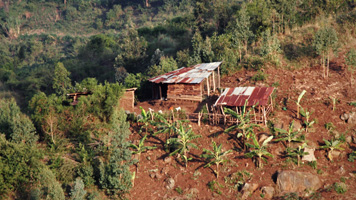
Subsistence farming – the cultivation of crop plants and the keeping of animals to ensure self-sufficiency – is something states, seed producers, agro chemical concerns, and world trade organizations consider backwards today – inefficient and a cause of poverty in the rural areas of the South. As a matter of fact, however, in the countries of the South, most farmers cling to self-sufficiency for good reasons. To them, it provides a much better food security than pure market output or wage work.
To generate export revenues from agriculture, the governments of the countries in the South thus regularly lease large areas of land to foreign agro concerns – with dramatic consequences for the local farmers.
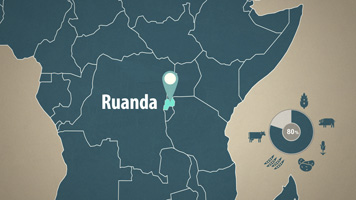
This may not be the case in Rwanda. The quite fertile land is much too densely populated, and, because of its hilly topography, is suitable for mechanized production only to a limited extent. Nevertheless, the government intends to have subsistence farming replaced by a fully monetarized, export-oriented agriculture by 2020. Only a commercial agriculture with varieties that maximize yield, with the use of pesticides and fertilizers, could ensure the food supply of the people and provide the farmers with the income they need to escape poverty. Although the government promotes the conversion to commercial agriculture by building streets and subsidizing cooperatives, 75% of all farmers continue to produce mainly for self-supply.
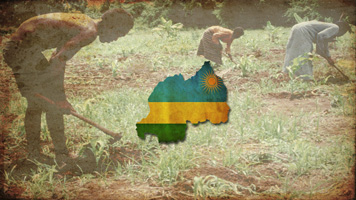
What are the reasons for this clinging to an allegedly obsolete type of economy?
In Rwanda, 80% of the people live on agriculture. The average area cultivated is less than 1 ha per household. On these areas, subsistence-oriented households grow many different crop plants – including millets, beans, tomatoes and leaf vegetables, sweet potatoes, manioc, and other starchy root crop. This way, the farmers imitate natural biodiversity and can do without the use of pesticides and fertilizers most of the time. Households with only little land can thus guarantee a balanced diet, without having to spend money. Households with enough land can, apart from producing their own food, also produce for the local or regional market.
Those households that solely rely on market output restrict themselves to one single product – for example, beans, potatoes or corn –, and use fertilizers and pesticides because monocultures exhaust the soil quickly and are more susceptible to diseases and pests.
Households with less than ½ hectare of land primarily bank on subsistence farming. They cannot take the risk of market output without endangering the household’s existence. Subsistence farming provides them with the extent of food security that allows them to go into another kind of business.
Households possessing more than ½ hectare of land can take the risk to engage in commercial agriculture on a larger scale. But only households with several hectares can risk converting to market output while fully abandoning subsistence farming.
Jene Haushalte, die vollständig auf die Marktproduktion setzen, beschränken sich auf ein Produkt – beispielsweise Bohnen, Kartoffeln oder Mais – und setzen Düngemittel und Pestizide ein, da Monokulturen den Boden rasch erschöpfen und gegenüber Krankheiten und Schädlingen empfindlicher sind.
Haushalte mit weniger als einem halben Hektar Land setzen vorwiegend auf Subsistenzproduktion. Sie können das finanzielle Risiko der Marktproduktion nicht eingehen, ohne das Überleben des Haushaltes aufs Spiel zu setzen. Die Subsistenzproduktion verschafft ihnen jenes Mass an Ernährungssicherheit, das es ihnen erlaubt, anderweitig unternehmerisch tätig zu werden. Haushalte, die mehr als einen halben Hektar besitzen, können sich das Risiko leisten, in grösserem Umfang kommkommerzielle Landwirtschaft zu betreiben. Aber nur Haushalte mit mehreren Hektaren können es riskieren, zugunsten der Marktproduktion ganz auf eigene Subsistenzproduktion zu verzichten.
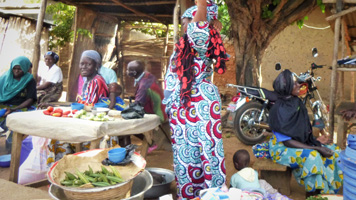
The dominance of subsistence farming in Rwanda, therefore, turns out to be a strategy of small farmers to secure their own food first before starting to produce for the market. The low average size of the farming plots results in the overall part of subsistence production remaining at a very high level. If the smallest farmers also fully converted to commercial agriculture, the accompanying risk would tend to have the effect that they, in order to survive, would be forced to sell their land in the case of poor harvests or low market prices. They would have no other option than to become poorly-paid agricultural workers or leave for the cities. That would exacerbate social tensions both in the countryside and the cities, because well-paid labor for these people can be found neither in the country nor in the cities.
Instead of considering subsistence production a backward type of economy, it would thus make much more sense to recognize and promote its potential for an environmentally and socially sustainable economy.
A subsistence farming basis for the many not only means a reduction of migratory pressure to the cities as well as the countries of the North but also a socially and culturally rich life in rural areas. Commercial agriculture should not destroy these structures but rather build on these.
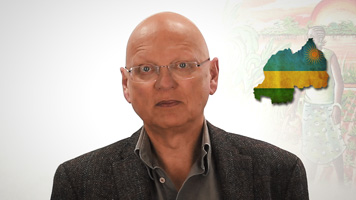
In view of the demographic and the economic conditions in Rwanda, the government should welcome the small farmers’ subsistence production as a significant contribution to the food security of the entire country.
Building on this basis, a customized commercial agriculture can help secure both the economic vitality of the small farmers and the food supply of the urban population.